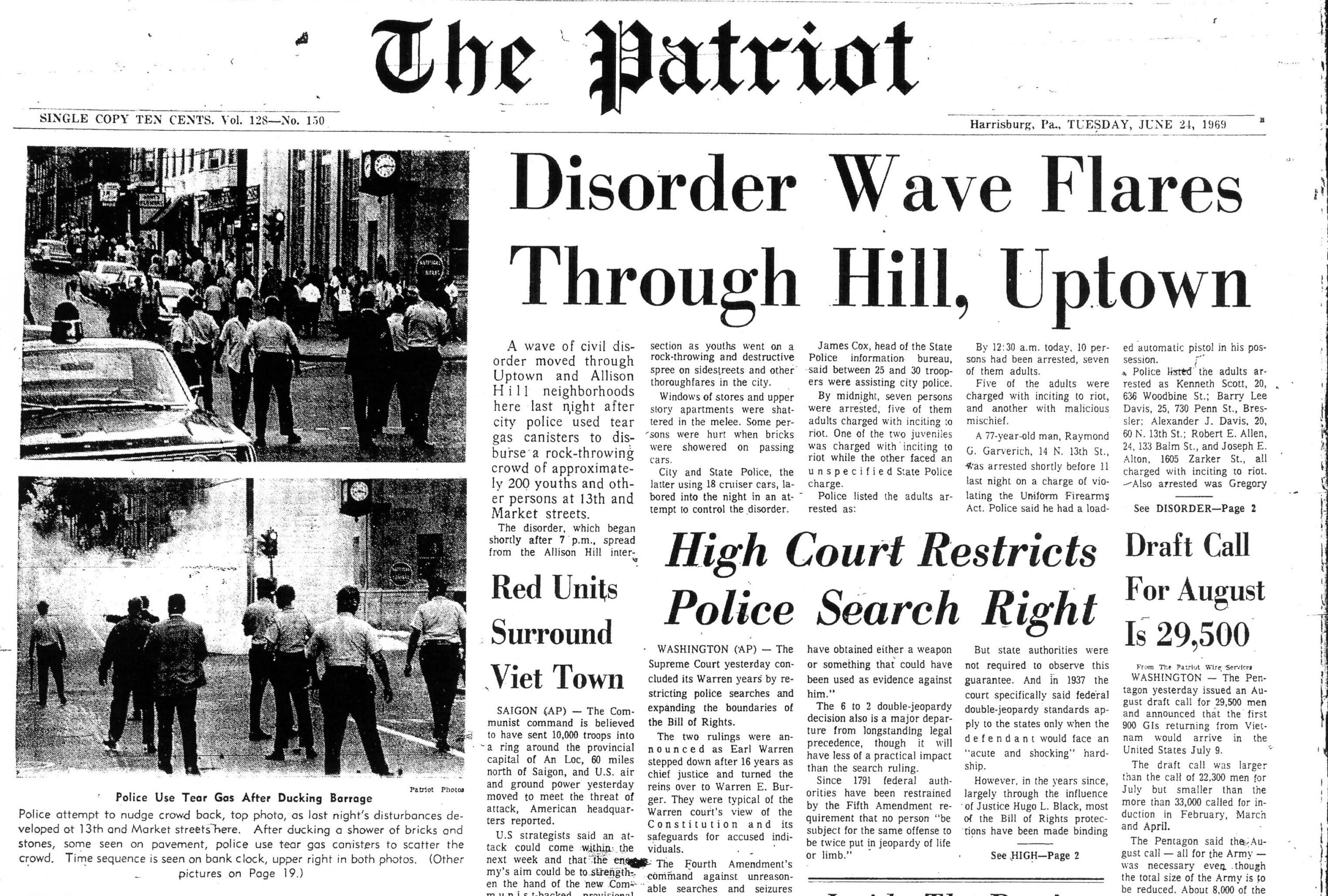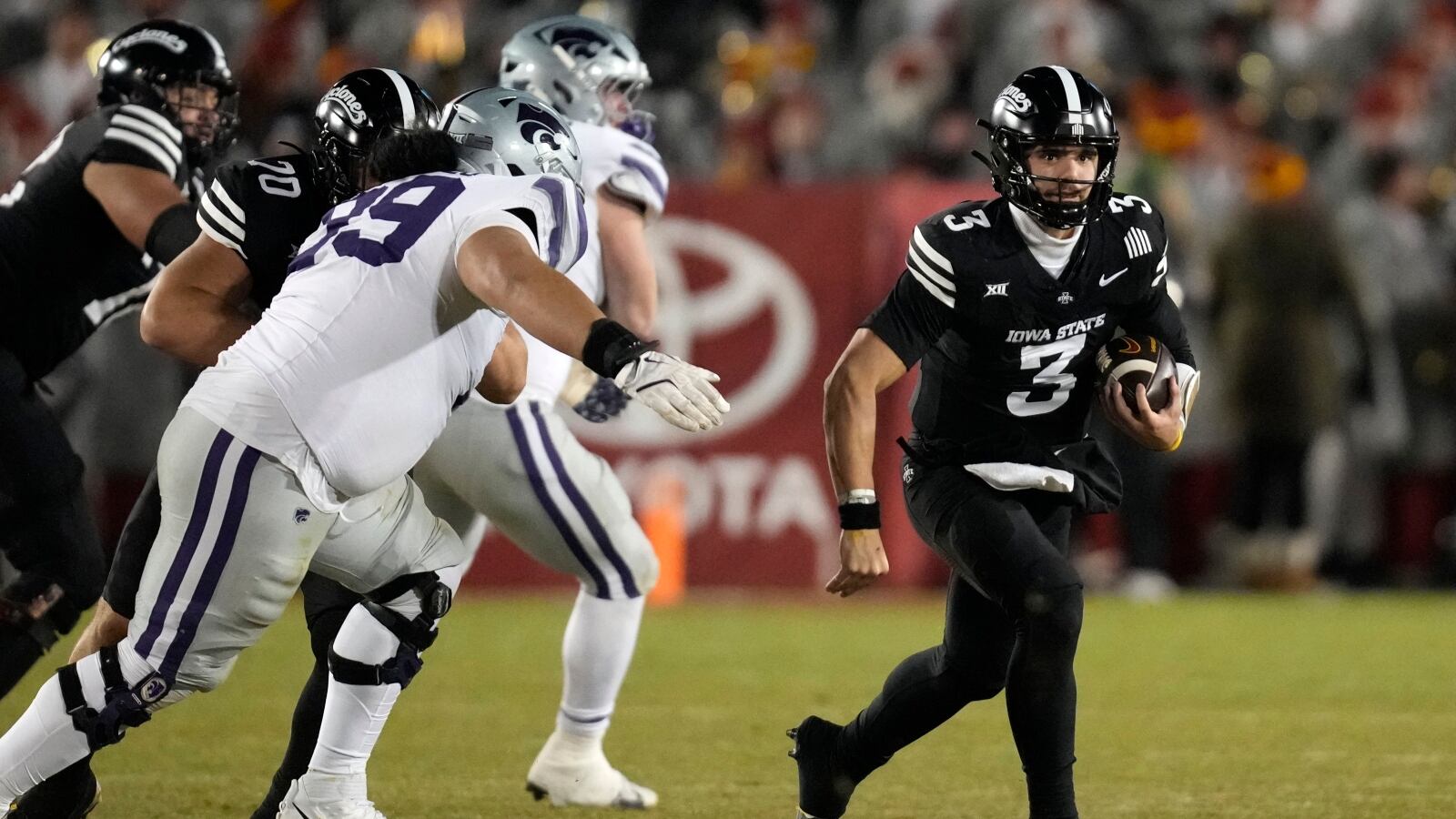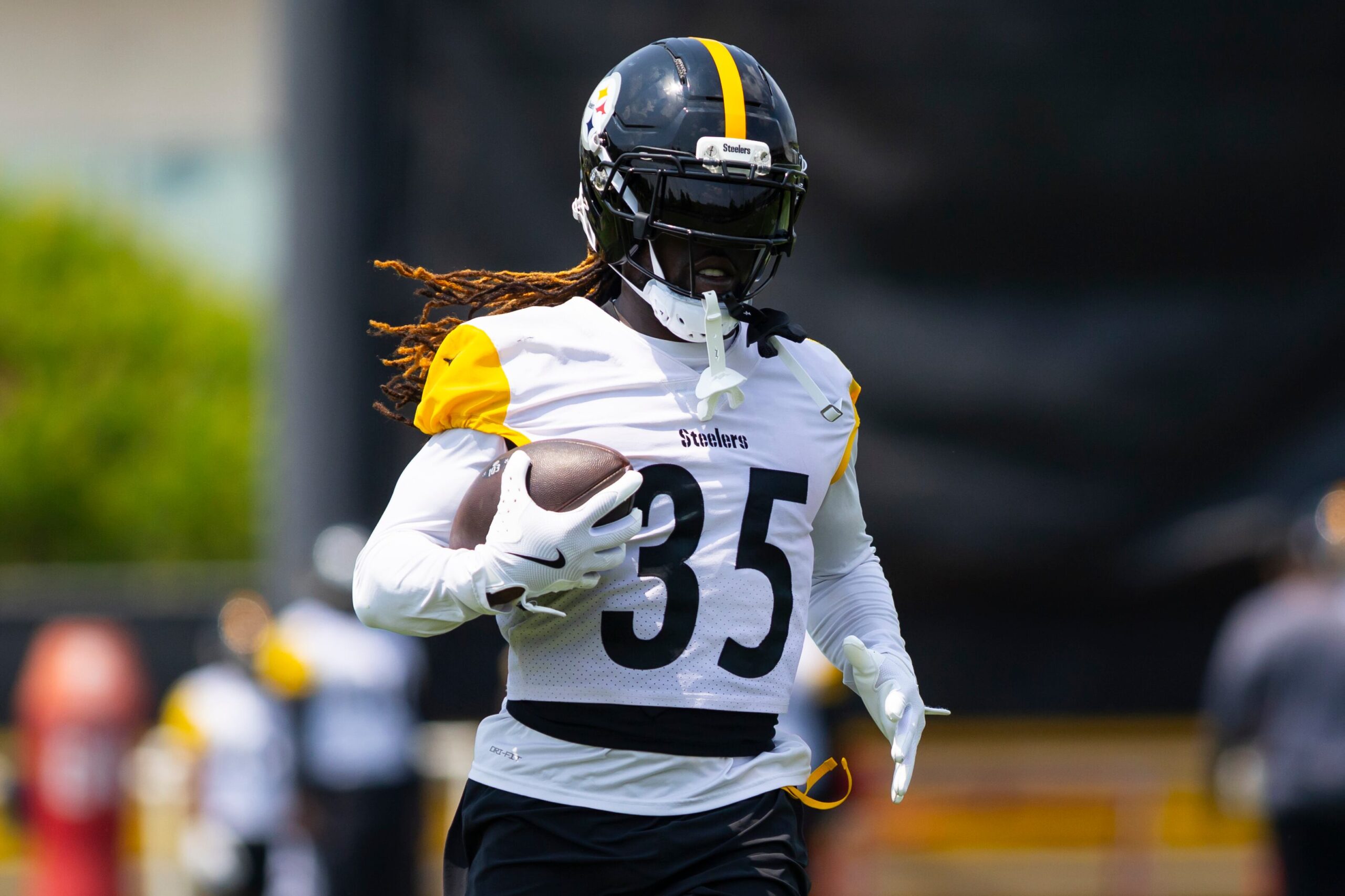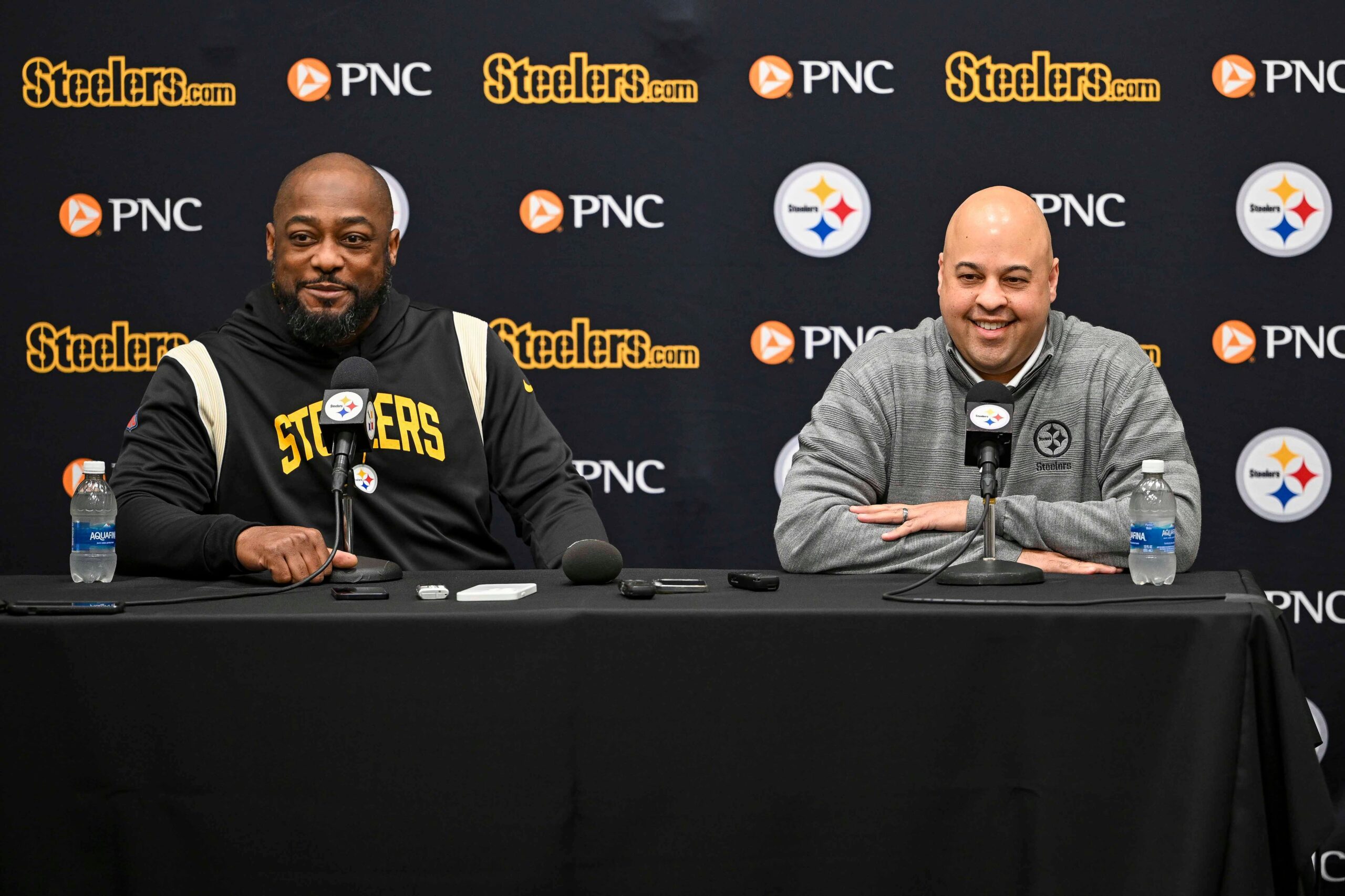Racial tensions in Harrisburger exploded in violence one summer about 60 years ago.
About 200 people demonstrated in front of the Goodyear Pharmacy at 13th and Market streets one day in June 1969. A Black lady who was accused of disorderly behavior after being turned away from the pharmacy coordinated the protest.
Armed with riot helmets and weapons, police showed up at the demonstration. Everything collapsed. Allison Hill and uptown were plagued by fires, vandalism, disorder, and over 100 arrests for a week. Charles Scott, an 18-year-old Black student at John Harris High School, was slain by Raymond Kertulis, a white police officer. Kertulis was later exonerated by a coroner’s jury.
However, the rebellion was not an isolated incident. It was the result of a number of factors, including the Harrisburg School District’s inability to develop a de facto desegregation plan required by the state and satisfy the demands for equality made by Black students and locals.
And a key player was Mary Yancey, the woman at the heart of the demonstration. She had a history of advocating for racial justice and desegregation and was a well-respected educator in Harrisburg’s Black community.
These are some of the conclusions drawn by Stephen R. Logan Jr. in his recently released master’s thesis at the University of Texas at San Antonio, Yesterday was Too Late: School Desegregation, Drastic Means, and the 1969 Harrisburg Black Rebellion. You are able to read.
Logan, a teacher in San Antonio, was born and raised in West Chester and has family in the Harrisburg region.
Logan connects and concentrates on the following in his thesis:
-
The school district s delays in following a Pennsylvania Human Relations Commission order in 1968 that it desegregate its schools.
-
Turmoil in the city s schools in February 1969 that led the district to cancel classes for a day.
-
The citywide violence of June 1969.
Additionally, he depicts Yancey, who passed away in 1993, situating her within the larger struggle for civil rights in Harrisburg.
My chat with Logan regarding this tumultuous period in Harrisburg’s history is included below.
Why did you choose this subject?
Family, to put it briefly. Growing up in Pennsylvania, I have always been curious about the connections between my family’s past and American history. As a white child growing up in the North in the 1990s, I believed that racism was a Southern-specific evil that had been successfully vanquished by the North through its backing of the Civil Rights Movement and liberation. The stories and textbooks seemed to present it that way. When one of my grandparents would use a racial slur or say that the neighborhood was better before those folks moved in, it would make me uncomfortable.
My family has a lengthy history in Harrisburg, which is why I chose it. I wanted to investigate an incident that was most likely discussed negatively from a Black perspective around my grandparents’ dinner table. I’ve had to contend with conflicting accounts of my forebears, whom I admired and loved but who harbored scathing opinions toward people of color.
You call the June 1969 racial violence a rebellion in your title. How did it constitute a rebellion?
Elizabeth Hinton, a historian at Yale University, deserves credit for coining such phrase. The majority of people would term it a riot, but over time, academics have given these kinds of incidents many names. Peter Levy, a historian from York College of Pennsylvania, dubbed this time period “The Great Uprising” since he wrote about the York riot of 1969.
Levy and Hinton both highlight the enormous number of distinct instances of violent political action.
The events of June 1969 in Harrisburg were the result of a movement calling for significant and drastic adjustments to the status quo. For years, the Black community had been putting pressure on the municipal government and school board to take action. The 1968 visit to the city by the Pennsylvania Human Relations Commission left many of its recommendations unmet.
Superintendent Glenn Parker described the conflict between the city’s Black adolescents and the school administration earlier in 1969 as a rebellion.
Only after years of concerted and tenacious efforts to bring about change did the violent action that took place in June 1969 come to pass.
You link the violent protests in June 1969 with a 1968 state decree that the Harrisburg School District desegregate its schools by using education as a connecting thread. What connection do they have?
The Pennsylvania Human Relations Commission effectively legislated something novel when it ordered the school district to desegregate.
The assassination of the Rev. Martin Luther King Jr. shortly after the mandate indicated to many in the Civil Rights Movement that his strategy had not worked.Around the country, protests erupted, and in Harrisburg, activists pushed the school administration to address classroom discrimination, employ more Black teachers, and include Black history in the curriculum.
The district avoided taking significant action on the issues raised by the students and community stakeholders while attempting to avoid taking significant action on desegregation. Students rebelled as a result of this inaction, and the district used this revolt as justification for more inaction, arguing that they were unable to submit a desegregation plan since the students were rebelling over issues that the integration mandate was intended to resolve.
Lastly, Mary Yancey, the woman at the heart of the June events, stated that she was inspired to protest by her former students.
Your analysis of Mary Yancey, the protagonist of the June 1969 uprising, is among the most illuminating aspects of your thesis. Why is she significant, and who was she?
Mary Yancey was a dedicated mother, public worker, educator, and activist. Finding that information required some research because the newspapers at the time only covered her arrest, protest, and prosecution for inciting rioting. Although they noted that she had taught in the past, only one piece in The Evening News attempted to tell the story from her point of view.
I met local historian and community member Calobe Jackson Jr. through the Harrisburg NAACP, and she informed me she was a good-natured troublemaker. Richard James, an activist whom he introduced me to, claimed that to know Mary was to love her.
The neighborhood was shocked when Mary was detained for disorderly conduct and then allegedly abused by the police while in detention because the Yanceys were a major part of the town.
Mary was able to organize a protest with 200 people in less than 48 hours, demonstrating her connections with local activists. She released Rocked in the Cradle of the Deep, a family autobiography, before to her passing. The stories describe the history of her family’s interracial relationship, which Mary obviously loved. It is filled with actions of resistance and overcoming overwhelming barriers to bring about change.
Would you like people to know anything more about this historical occasion in Harrisburg?
I entered this study expecting to find some concrete proof of how my grandmother would have felt about these incidents, but instead I realized how awful this time was for the city.
For some who believed it was unneeded, incremental change was too much, but it wasn’t enough to break generations of passivity.
In the 1960s, Harrisburg began to lose its white population, and this trend persisted throughout the 1970s.
Looking back, it seems that leaving was simpler than dealing with the structural problems that had been brewing for more than a century.
It’s critical for me to recognize that, despite my extensive knowledge of this time, I cannot claim to be an expert on it. The folks who lived the narrative are the ones who own it. I would love to hear from those who can speak to it in a manner that I will never be able to, and I want to continue my investigation this time in Harrisburg. If you would want to share anything, please send me an email at [email protected].
Joe McClure works for The Patriot-News as a news editor. Follow him at @jmcclure5nine on Instagram.






